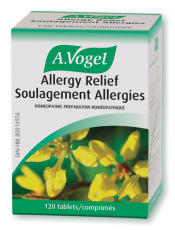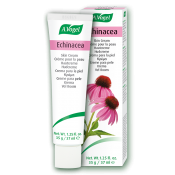How do I differentiate the two species?
Answering this question involves understanding a bit about the anatomy of the different plants.
Ragweed is a species of plant that involves a variety of different members, all part of the Asteraceae family. The most common is known as Ambrosia artemisiifolia, and is considered the most invasive and prominent. Its typical habitat is disturbed sites such as that found near railways and crop fields, or in urban centres. Ploughing fields favours the growth of this species as it tears the roots of native plants that may otherwise block this invasive species.
Considering the seed can survive for upwards of 40 years, even the most mindful of farmers may have trouble warding this species off. As another unfortunate fact, the increase in atmospheric carbon actually increases the amount of pollen produced by the plant, with each capable of releasing over a billion granules. The plant grows quite tall ranging from 15 to 150cm, as high as 2 metres, and it typically branches quite extensively and the leaves of the species are finely divided into pairs along the branch.
Poison ivy, more formally known as Toxicodendron radicans, is a member of the Anacardiaceae family. This species prefers shores dominated by sand and stone and wooded areas. The unique thing about poison ivy is that it can exist as either an aerial vine that climbs upwards of 10m on trees or posts, as a small shrub that grows to about a meter in height, or as a trailing vine approximately one foot tall.
The woody stem produces shoots with the characteristic three almond-shaped leaves. This species also shares a love of a carbon dioxide rich atmosphere which promotes its extensive growth across Canada.
What symptoms do each of these plants cause?
Unsurprising to those suffering from summer allergies, the countless pollen particles produced by ragweed can travel as far as 200km from the original plant. This makes it the most common source of seasonal allergies across Canada. The symptoms of allergies range for those battling what's better known as allergies rhinitis.
This includes symptoms such as a runny or stuffy nose, watery and itchy eyes, an often-dry cough, and overall irritation. The irritation can be so bad that those suffering find it difficult to sleep, with insomnia causing a host of other issues.
On the other hand, our familiar foe poison ivy carries a weapon that activates when skin comes in contact with the leaves. The leaves secrete an oil known as urushiol that binds to the skin and gets absorbed. As the oil is metabolized in the body, the body undergoes an allergies response which result in a painful, red, and irritated rash that can last for weeks.
The reaction to urushiol is actually a fascinating defense mechanism in that the plant isn't actually toxic, but tricks the body into having an inappropriate reaction to an otherwise harmless allergen. The rash begins to develop blisters to soothe the irritated tissue, but the reaction may drive individuals into anaphylactic shock.
To battle the symptoms of allergies, is there anything I can use to protect my system?
Allergy Relief is a homeopathic preparation of a variety of ingredients, including plants from the Asteraceae family, one of the most common flowering families in Canada. Those taking this product, experienced an 88.5% improvement in their allergy symptoms, especially their runny and stuffed up nose. As it's a homeopathic preparation, the product is safe for pregnant and nursing mothers who may be experiencing perinatal depression or allergies.
What about my rash?! Some topical help can be found in the form of various creams.
As an herb, we're very familiar with the ability of certain plants like Echinacea purpurea to modulate the immune system which is highlighted by the ability of products like Echinaforce that reduce the severity and duration of the common cold and flu.
As a topical, this herb has been shown to help increase the amount of lipids present in the various layers of the skin including the epidermis. This promotes the health of the barrier and makes it less likely that various pathogens or allergens enter the deeper layers, reducing the risk of allergic reactions. The alkylamides are the compounds that most heavily contribute to restoration of the epidermal barrier.
These are great, but what about prevention? Any other tips?
Certain plants act as natural antihistamines, including stinging nettle (Urtica dioica) and green tea (Camellia sinensis), the latter due to a compound known as epigallocatechin-3-gallate (EGCG). In a randomized, double-blind, placebo-controlled clinical trial, 150mg of stinging nettle taken for one month was enough to improve symptom scores on the Sino-Nasal Outcome Test (SNOT-22).
We also highly encourage you to read some of our other articles including '5 Tips to Fight Ragweed Allergies' and '6 Solutions to Get Rid of Hay Fever Rash' where we have dedicated entire articles to ragweed allergies!
Stepping into nature carries countless benefits, so wear clothes that cover your skin to avoid contact with poison ivy and ensure you're defending yourself against those pesky allergens! Stay health and stay safe.
References:
Altieri, Miguel A., and Matt Liebman. "Weed management: ecological guidelines." (1988).
https://naldc.nal.usda.gov/download/14657/PDF
https://www.ncbi.nlm.nih.gov/pmc/articles/PMC5963652/
https://pubmed.ncbi.nlm.nih.gov/11056414/
https://pubmed.ncbi.nlm.nih.gov/14521154/
https://pubmed.ncbi.nlm.nih.gov/19912233/
https://pubmed.ncbi.nlm.nih.gov/20652470/






